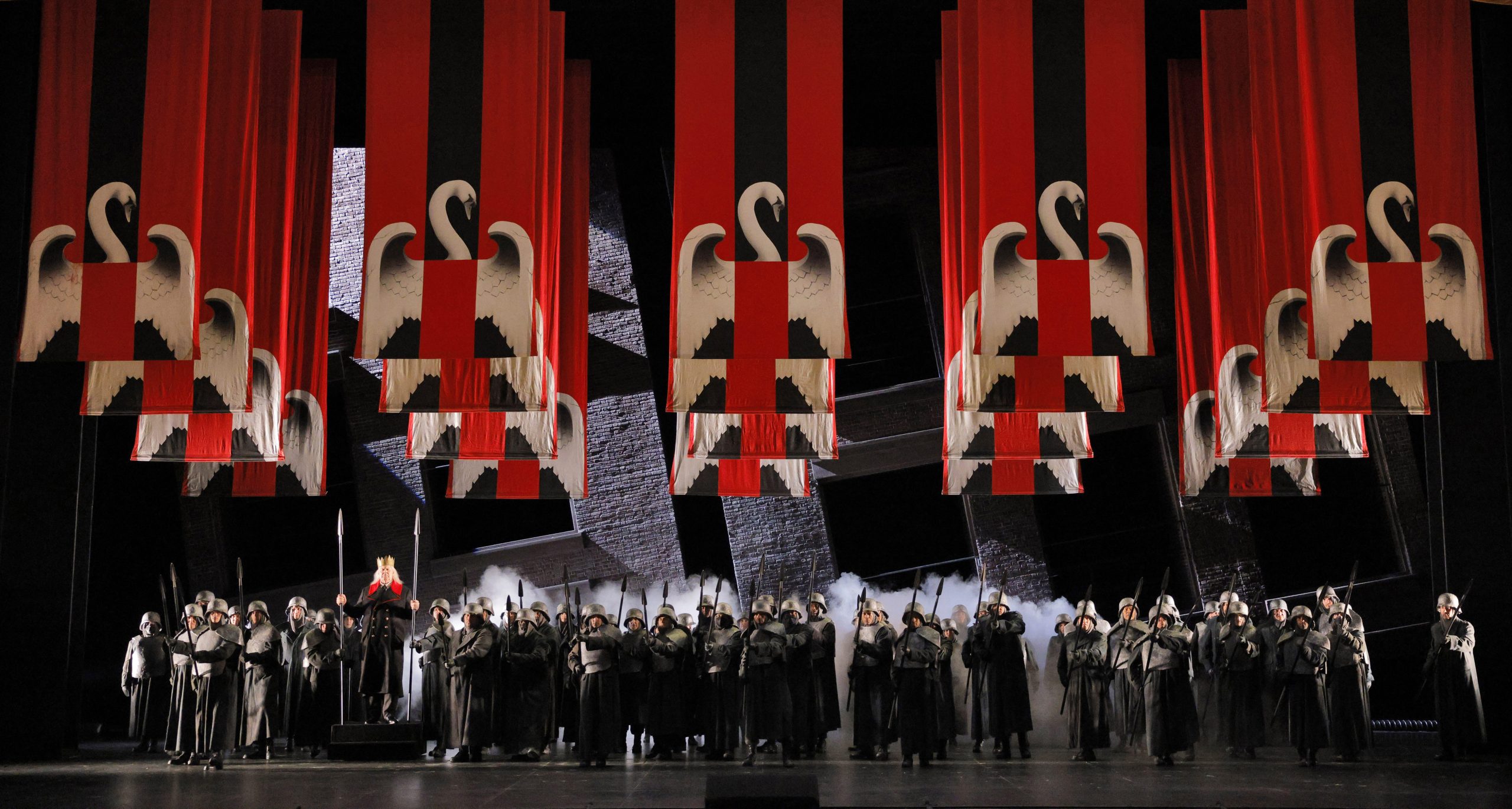San Francisco Opera recently presented six performances of Lohengrin (Oct. 15 – Nov. 1) that left an indelible mark on its audience. Eun Sun Kim, the company’s Music Director, ventured into Wagner’s repertoire for the first time since coming to San Francisco, in line with her commitment to perform one Wagner work and one Verdi work each season. She led both the orchestra and the audience in one of Wagner’s most exquisite and powerful creations.
Simon O’Neill tackled the title role with ease, showcasing a voice that effortlessly handled the high tessitura and resonated throughout the opera house. Julie Adams, a California native, debuting the role of Elsa, secured her place among the best interpreters of the character.
In her San Francisco Opera debut, Romanian soprano Judit Kutasi offered a flamboyant portrayal of Ortrud, malevolently seizing the souls of the audience through her embodiment of evil. Brian Mulligan (the Heerufer in the recent Met production) as Friedrich von Telramund and Thomas Lehman as the Herald were equally impressive in their roles. Icelandic bass Kristinn Sigmundsson, portrayed Heinrich with a mature and stentorian voice that befitted this venerable character.
The production, co-presented with the Royal Opera House, Covent Garden, and Oper Vlaanderen, Belgium, was directed by David Alden and took a bold departure from the traditional tenth-century Brabant setting. Instead, it portrayed a despotic, war-torn country in the 1930s, marked by a palpable undercurrent of insecurity. The set featured tilted buildings with sinking foundations, symbolizing political instability, with Elsa making her entrance from an underground prison. Amidst a stunning light show simulating the flapping wings of a swan, Lohengrin arrived on stage in a visibly soiled all-white suit, signifying his arduous journey. His magical powers enabled him to defeat Friedrich von Telramund without a weapon, prompting the King to declare that he must have been sent from God.
During Act II, a swan statue uncannily resembling the Nazi eagle served as a backdrop for the wedding procession. Elsa’s bridal gown descended from the clouds, a symbolic representation of a celestial union. In Act III, nodding to tradition, an 1882 portrait of Lohengrin was prominently displayed in the bedroom, showing him on a boat pulled by a swan. Continuing the subtle linkage to Naziism, the final scene incorporated a legion of swan flags with red, white, and black colors that matched those used in swastika flags.
This linkage, in itself worthy of book-length discussion, might be criticized as the perpetuation of the tired canard that retroactively labels Wagner as a proto-Nazi. However, I felt it reflected the unfortunate linkage of Naziism to Heinrich der Vogler (Henry the Fowler and Heinrich in the opera), based on the actual 20th century hijacking of his legacy. As many consider Henry to have been the first king of Germany, Wagner used this story as a means to promote German nationalism and unity. A millennium after King Henry’s death, the Nazis reframed his history to suit their own national-socialist purposes. Heinrich Himmler allegedly saw himself as the reincarnated spirit of Heinrich der Vogler and restored his gravesite in Quedlinburg, a medieval town well worth visiting. In this historical context, the production’s Nazi imagery takes on added relevance.
San Franciscans can look forward to a Wagnerian treat in each of the coming seasons!
© Wagner Notes, January 2024, a publication of the Wagner Society of New York. All rights reserved.

